24TH OCTOBER, 2025
Hello.
Shortly before it ended a few weeks ago, Jen and I visited the Ice Age Art Now exhibition at Cliffe Castle in Keighley. The exhibition was to mark nearby Bradford’s year as UK City of Culture. The exhibits were on loan from the British Museum, whose new director used to visit Cliffe Castle as a boy.
The pieces were stunning. Here were exquisite horses, reindeer, ibexes, a wolverine and even a mammoth carved by hunter-gatherers on bone, stone and ivory in the inconceivably distant past, between 11,000 and 20,000 years ago. This was when the climate was far colder, long before the Neolithic Revolution and the advent of ‘civilisation’ in Mesopotamia. Art before civilisation: who’d have thought it?
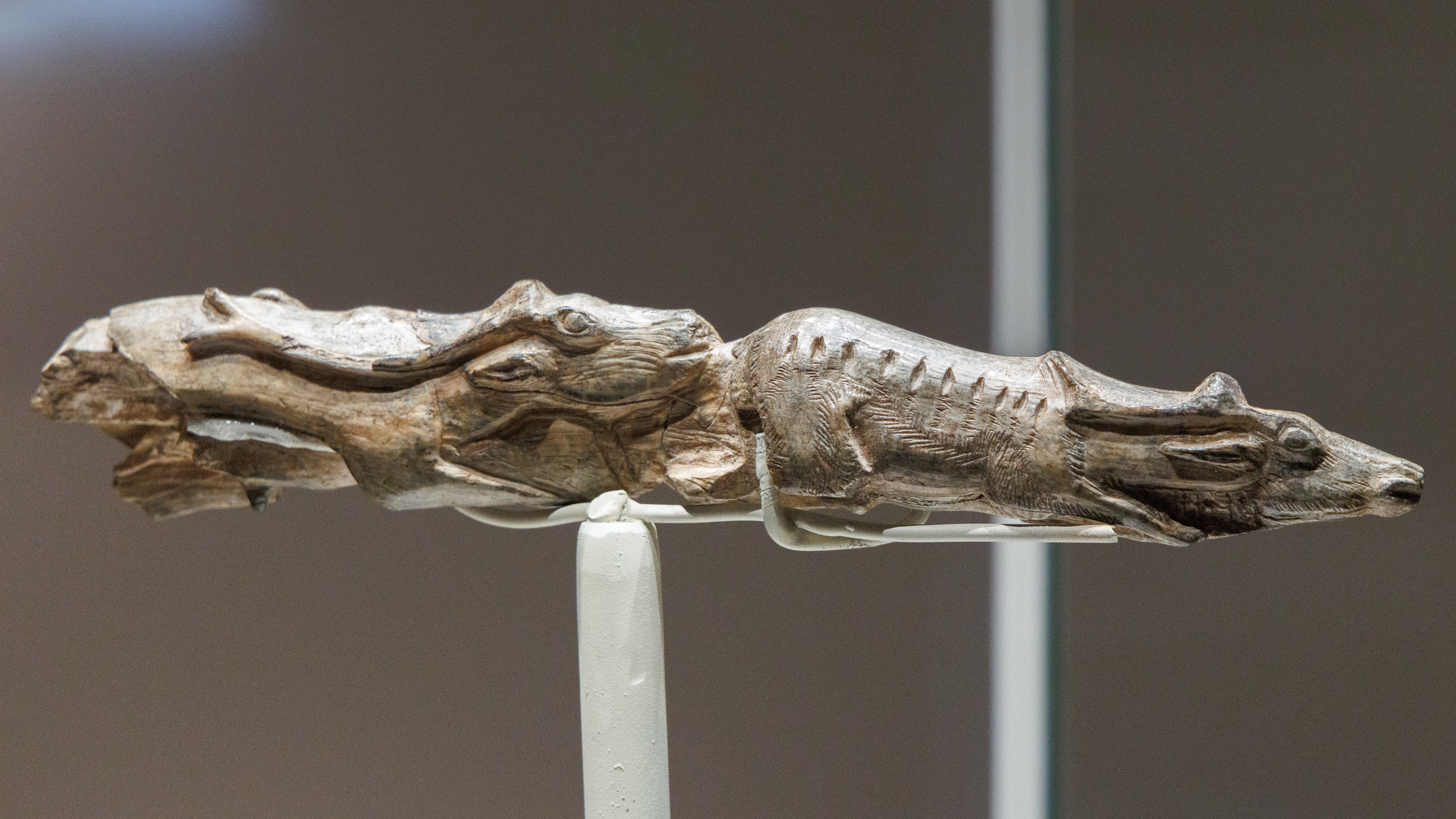
Most of the exhibits on display were found in caves and rock-shelters in what is now France. Such finds are rare, but even rarer in Britain, whose northern climes were, as now, less conducive to human habitation. But there were a few British artefacts on display, including the oldest known works of art from both England and Wales.
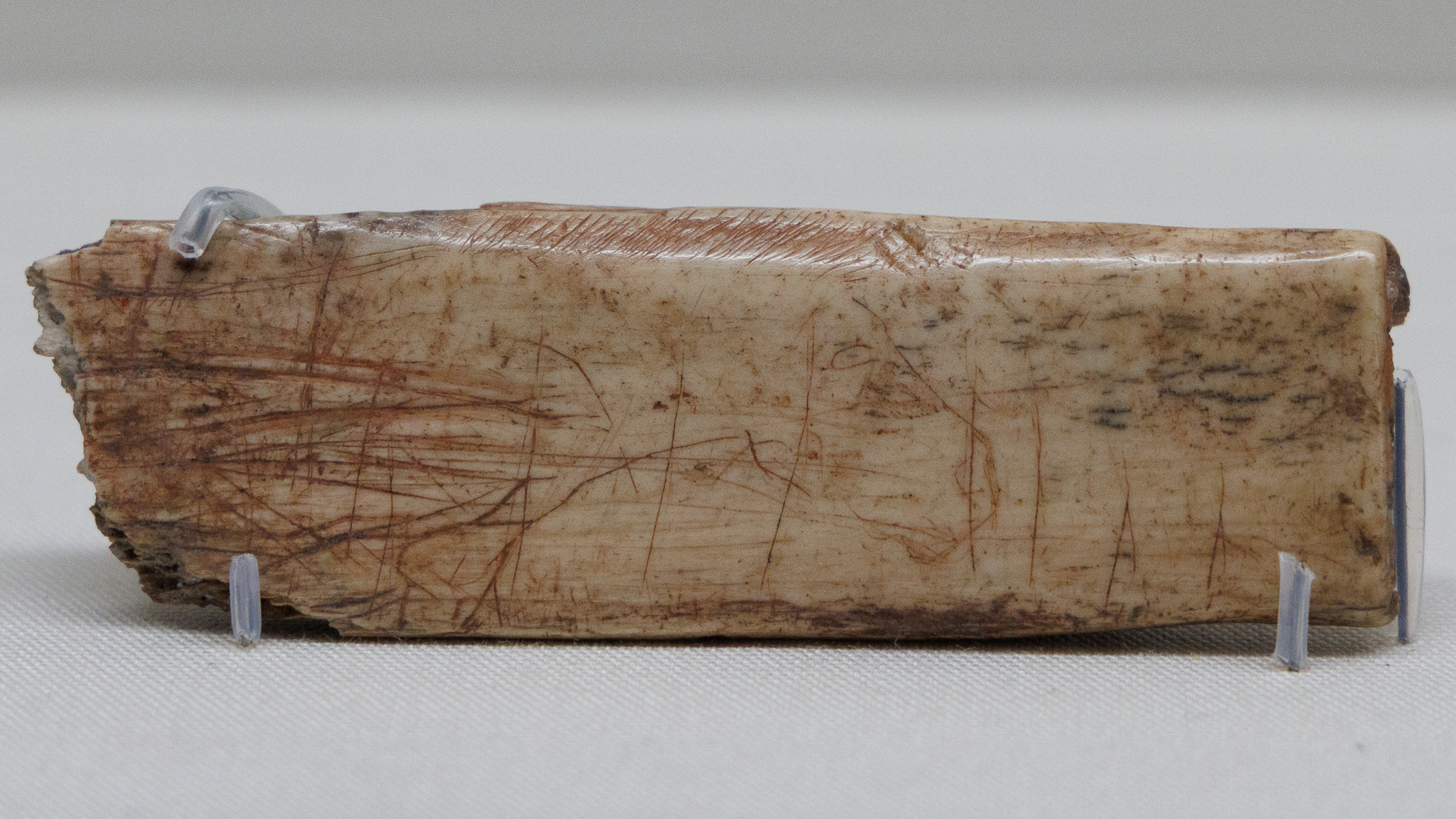
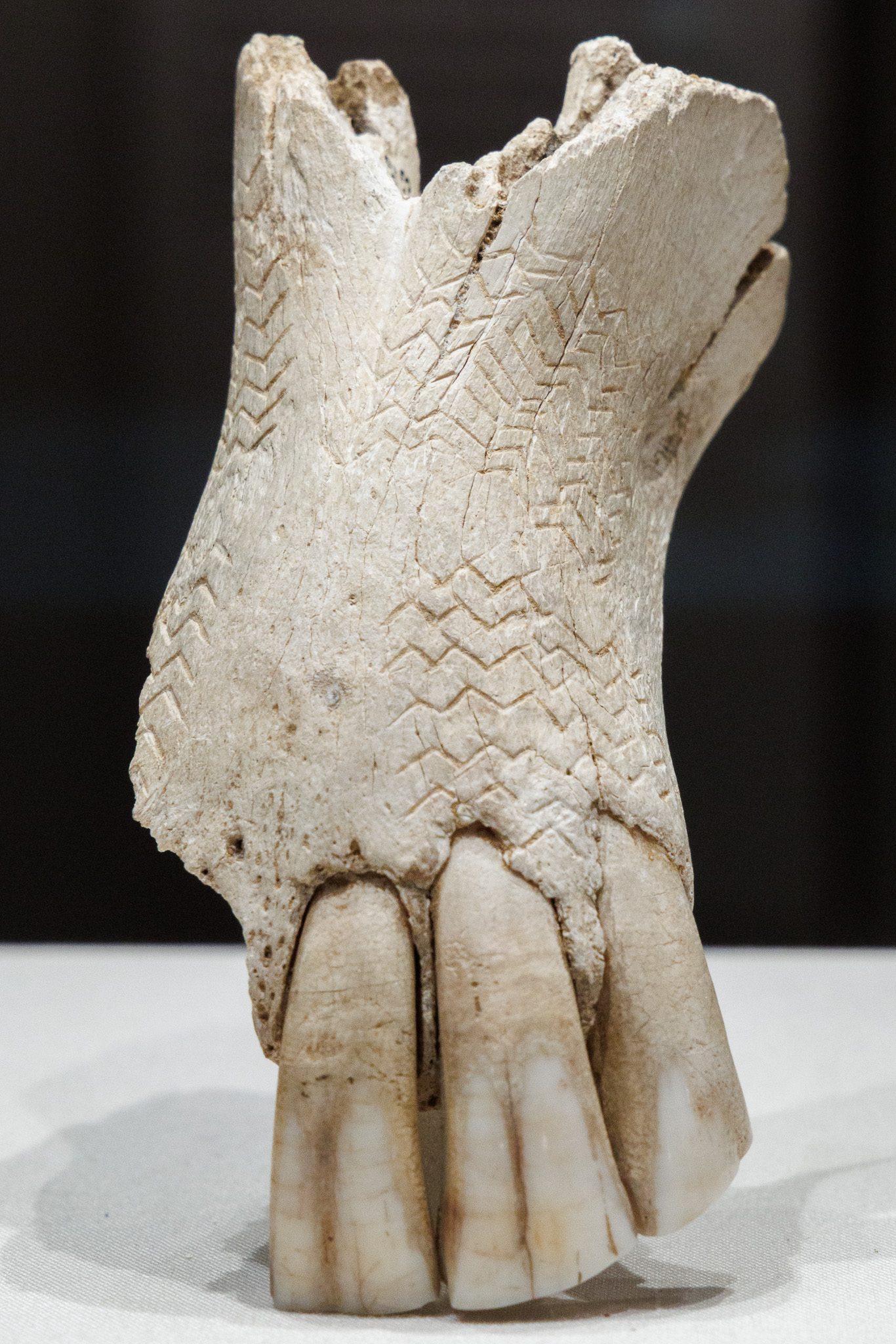
It’s tempting—and pleasing—to think the people who made these wonderful artefacts might have numbered among our ancestors alive at that time. But recent analyses of ancient human DNA indicate almost no western-Eurasian hunter-gatherer DNA survived the subsequent Neolithic Agricultural Revolution. It seems the offcumden farming communities that later migrated from farther east mostly replaced these hunter-gatherers’ descendants, rather than merging with them.
One thought kept running through my mind as I gawped and snapped away at these prehistoric masterpieces: these people knew mammoths! These people shared their environment—their ecosystem—with Pleistocene megafauna. These people knew how mammoths moved, sounded, smelt and tasted. Just imagine. They were also intimately familiar with wild horses, reindeer and wolverines. They will have had their own words for all these creatures: words we shall never know.
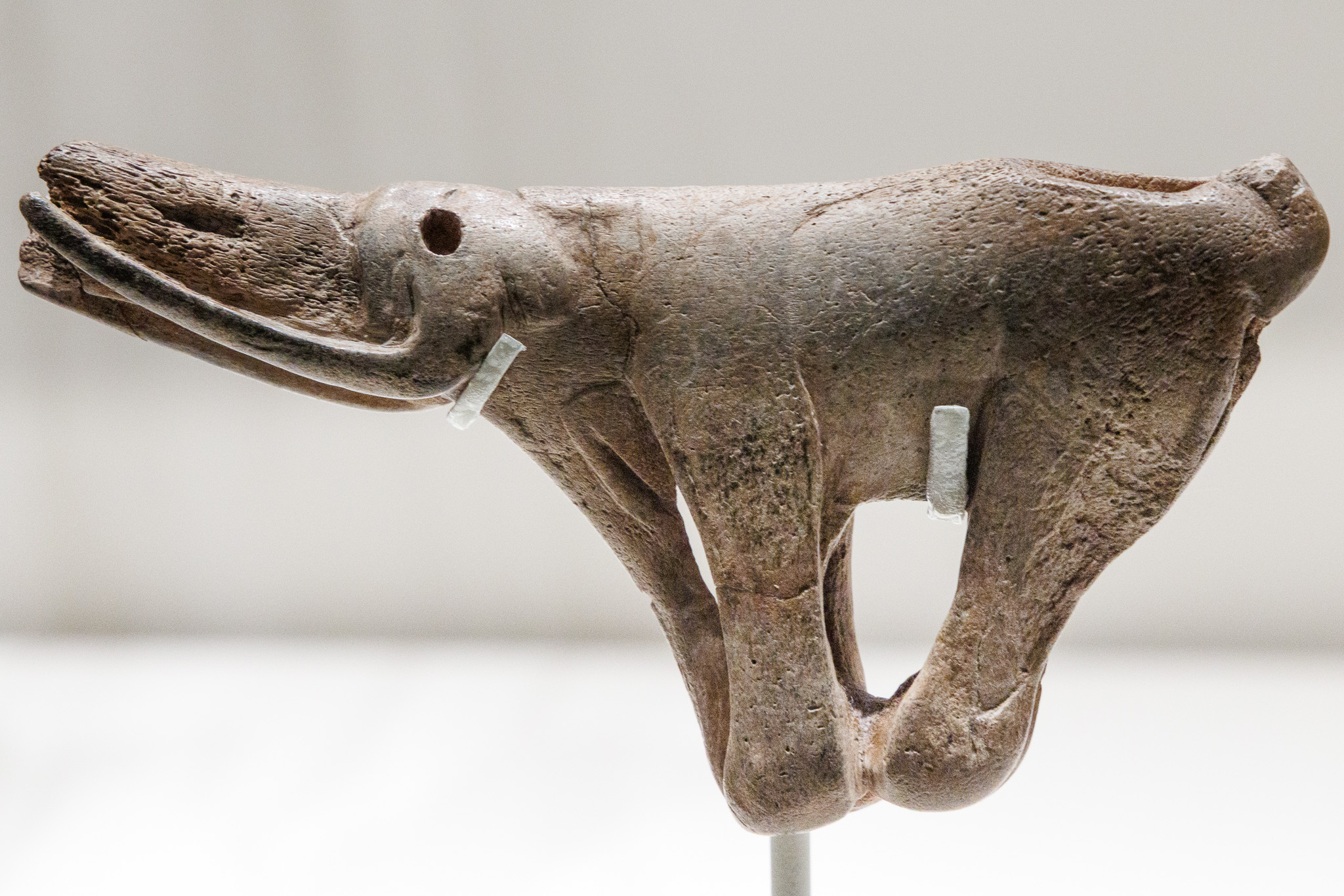
The people who made these carvings were surrounded by rocks and the detritus of hunting, including bones, ivory and antlers. While it made sense to fashion these resources into useful tools such as hand-axes, fish-hooks and spear-throwers, their reasons for making art with them seem less obvious.
Archaeologists have a default explanation for any human artefact the purpose of which they can’t fathom: possibly ceremonial. Who knows, perhaps some of these pieces were indeed ceremonial—whatever that might mean. Or maybe they were teaching aids, or good-luck talismans, or simply fashioned out of boredom. But I prefer to think of them as being created for the sheer challenge and enjoyment of creating them: art for art’s sake. Which makes you wonder about all the other, more perishable art these people no doubt created. Did they daub pigments on animal hides, or tattoo their bodies, or festoon their surroundings with decorations? Did they tell tall tales and sing songs around the fire? They must have! But we only know about the stuff that’s survived, which means we no doubt attach undue significance to it. Not everything has to be either useful or possibly ceremonial; creating art for art’s sake is reason enough.
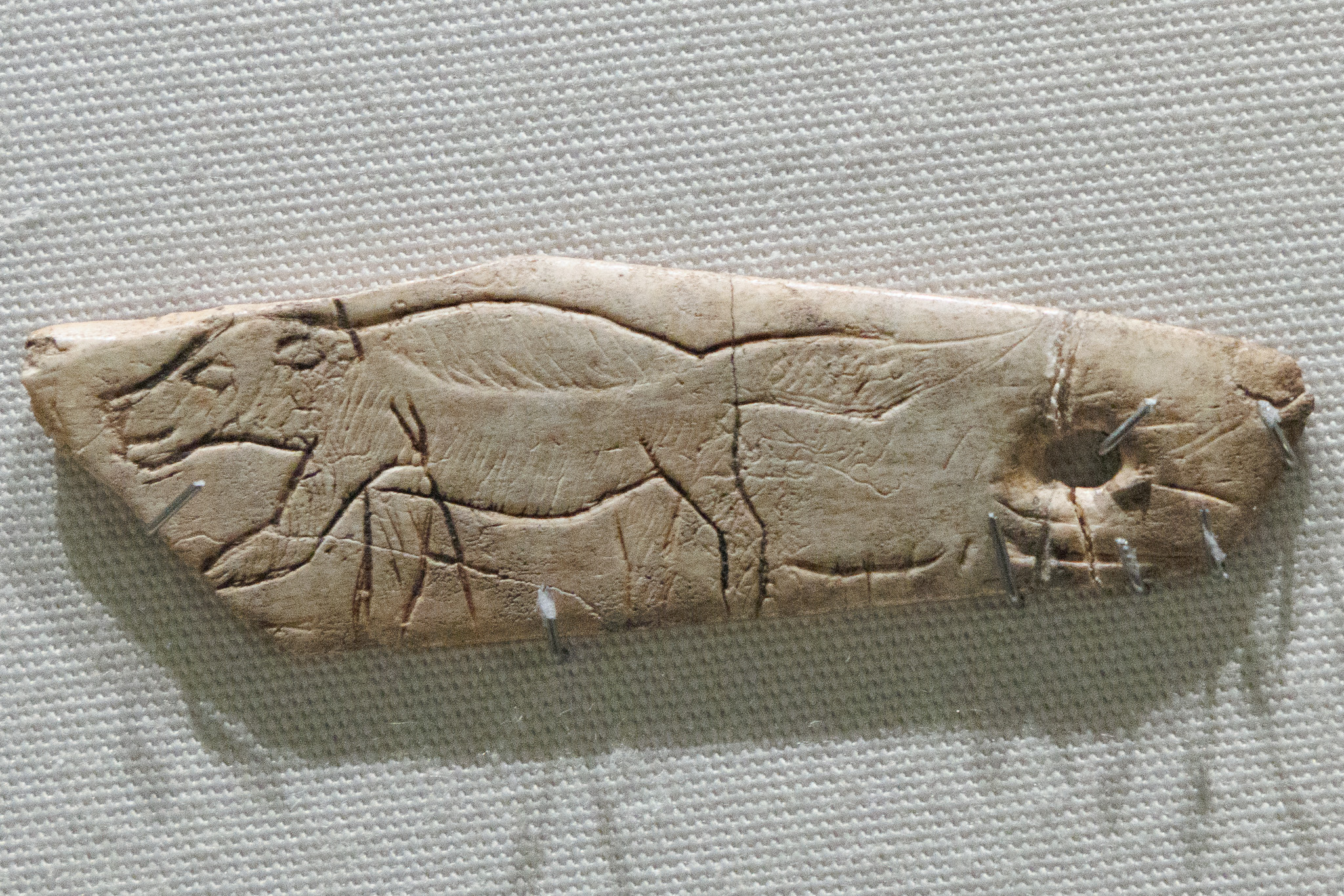
Whatever their reasons for making this art, I’m glad they did, and that some tiny fraction of it at least has escaped the entropy of the ages for us to enjoy in our more temperate geological epoch.
Some stuff I thought worth sharing
- The problem with traditional writing advice
A fascinating 90-minute video conversation with Robert Macfarlane about the craft of nature- and place-writing. - On not writing
Say it ain’t so, Kathleen! My favourite writer, Kathleen Jamie, considers writing’s fallow periods. - Supereffable: mysteries of the Pearl manuscript
On the only known manuscript of four English medieval poems—including Gawain and the Green Knight (see below)—which survived a catastrophic library fire in 1731. - How lichens are bringing stone to life and reconnecting us with the natural world
Formed through symbiotic relationships, lichens don’t fit easily into the standard Linnaean classification system. This has led some researchers to consider alternative ways of seeing them. - In the blink of an eye: wild birds switch from sound to sight communication in noisy stream environments
A new study suggests dippers start communicating visually besides noisy rivers. - Extreme drought contributed to barbarian invasion of late Roman Britain, tree-ring study reveals
The ‘Barbarian Conspiracy’ of 367 CE was one of the most severe threats to Rome’s hold on Britain since the Boudiccan revolt three centuries earlier. New research suggests it might have been triggered by a series of summer droughts. - The master photographer you’ve probably never heard of
A short video documentary on Chinese photographer Yang Yangkang’s work documenting Catholics and Tibetans over two decades. - When ordinary is a superpower
On the importance of maintaining personal diaries in difficult times. - How to make a cover for the London Review of Books
Artist Jon McNaugh takes us through the process of making a cover for the LRB. - Why the BBC’s Shipping Forecast still entrances people after 100 years
There is something reassuringly British about the Shipping Forecast, which was first broadcast by the BBC in 1925.
Recent reading

‘Sir Gawain and the Green Knight’ by Simon Armitage
An excellent alliterative translation of a medieval masterpiece which, as we have heard, narrowly escaped fiery entropy.
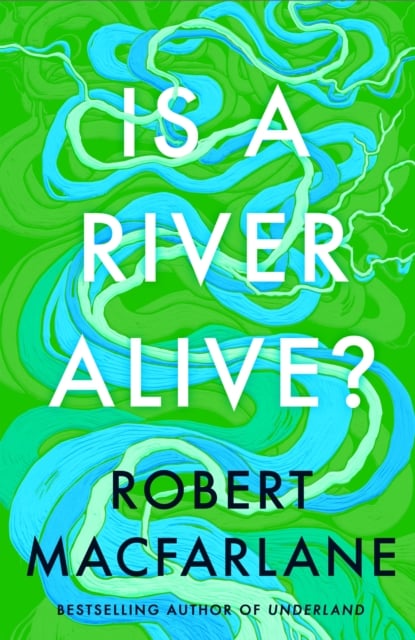
‘Is a River Alive?’ by Robert Macfarlane
Rivers as living entities: preposterous animism or a useful metaphor?
Book update
It’s not just Kathleen Jamie who’s been going through a fallow period. There have been plenty of (mostly good) distractions from work this year, including lots of travel, with more still to come, so progress on Through Darwin’s Eyes has slowed considerably. But I hope and expect things to start picking up again soon.
Newsletters update
After a six-month hiatus, I also hope to resume sending out my newsletters more often. One problem that’s been nagging me is the overlap in the subject matter of my two newsletters (this Rich Text newsletter and my Darwin newsletter): they’re both largely about science, history and nature. I still plan to keep them separate, but will be referring to them more under the joint banner of my science • history • nature newsletters. Think of them as variations on a theme.
And finally…
Thanks as always for making time to read this newsletter. If you’ve enjoyed it, please spread the word.
Take care, and I’ll see you next time.
Richard
richardcarter.com
Places to follow me:
Website: Blog • Newsletter • Reviews • Moor book • Darwin book • RSS
Social: Substack • Bluesky • Mastodon • Instagram



Leave a Reply